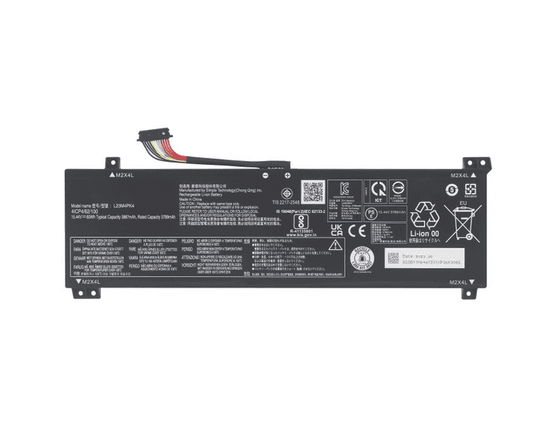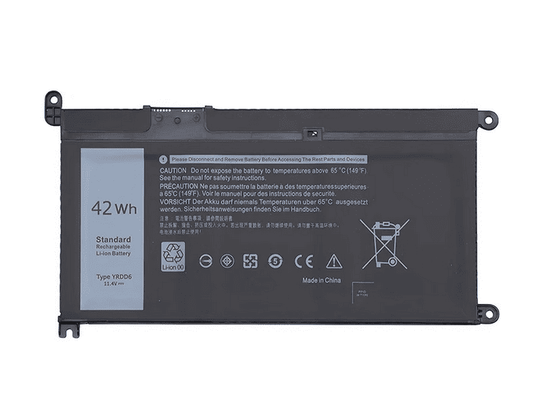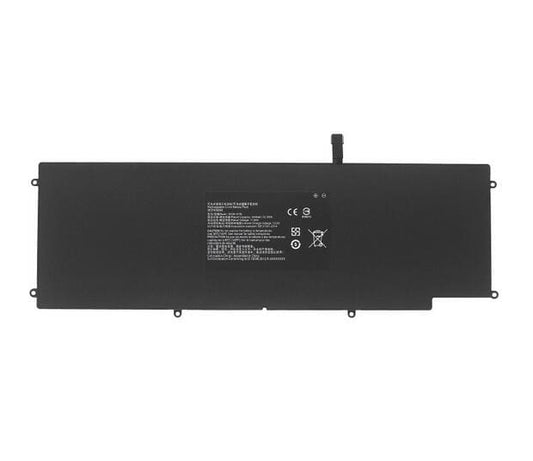
5 Key Factors That Determine SLA Battery Lifespan
Share
Sealed Lead Acid (SLA) batteries are widely used in UPS systems, medical equipment, emergency lighting, and renewable energy storage. Their reliability makes them a cornerstone in both commercial and residential power solutions. However, their efficiency and performance decline over time, often due to preventable factors.
Understanding the lifespan of an SLA battery is crucial for both cost savings and operational reliability. A typical SLA battery lasts between 3 to 5 years under optimal conditions. Mismanagement, environmental stress, or improper charging can reduce this lifespan by up to 50%.
SLA batteries are composed of lead plates and an electrolyte, sealed within a sturdy casing. Unlike traditional flooded lead-acid batteries, SLA batteries are maintenance-free in everyday use, but they remain sensitive to external factors. Minor changes in storage, charging, or usage can have a significant impact on their longevity.
This article explores the five main factors that influence SLA battery lifespan, providing data-backed insights and actionable advice. Readers will learn not only what affects performance but also how to proactively manage and extend battery life.
Temperature and Environmental Conditions
Temperature is one of the most critical factors affecting the lifespan of SLA batteries. These batteries are sensitive to both high and low temperatures, and even small deviations from the optimal range can reduce capacity and accelerate degradation.
Impact of High Temperatures
High temperatures increase the rate of chemical reactions inside the battery. While this may temporarily improve performance, it significantly shortens battery life. Research shows that for every 10°C increase above 25°C, SLA batteries lose roughly 50% of their expected lifespan. For example, a battery rated for 5 years may fail in just 2.5 years if consistently exposed to 35°C.
High heat can also cause the electrolyte to evaporate or lead to plate corrosion, resulting in reduced capacity and internal resistance increases. UPS systems and data centers often face this issue if cooling is inadequate.
Impact of Low Temperatures
Low temperatures slow down chemical reactions inside the battery, which reduces available capacity. For instance, at 0°C, a typical SLA battery may deliver only 70% of its rated capacity. While this does not permanently damage the battery if usage is occasional, prolonged exposure to freezing conditions can lead to electrolyte freezing and physical damage to internal plates.
Optimal Operating Range
The recommended temperature range for SLA battery operation is typically 20°C to 25°C. Storage should ideally be within 15°C to 25°C, in a dry environment with minimal humidity. Avoid placing batteries near heat sources, direct sunlight, or poorly ventilated spaces.
Environmental Factors Beyond Temperature
- Humidity: Excessive moisture can corrode terminals and connectors, increasing resistance and causing leakage.
- Vibration: Batteries installed in vehicles or machinery may experience micro-damage to internal plates due to constant vibration.
- Air Quality: Dust or chemical exposure can degrade the casing or connectors, indirectly affecting performance.
Practical Tips for Temperature Management
- Keep batteries in temperature-controlled environments when possible.
- Use insulated enclosures or battery racks with cooling fans in hot climates.
- Monitor battery temperature regularly with digital sensors.
- Avoid storing fully charged batteries in hot areas, as heat accelerates self-discharge.
By controlling environmental conditions, SLA batteries can maintain optimal performance and achieve their rated lifespan. Neglecting temperature management is one of the most common causes of premature battery failure.
Charging Practices
Proper charging is essential for maintaining SLA battery health. Unlike some modern battery chemistries, SLA batteries are sensitive to both overcharging and undercharging. Poor charging habits are among the leading causes of reduced lifespan.
The Risks of Overcharging
Overcharging occurs when a battery receives more voltage or current than recommended. Even a small, consistent overcharge can lead to:
- Electrolyte loss through gassing
- Plate corrosion inside the battery
- Permanent capacity reduction
Studies show that maintaining SLA batteries at just 0.1V above recommended voltage over a year can reduce their lifespan by 20–30%. Overcharging also increases internal heat, compounding damage if environmental temperatures are already high.
The Risks of Undercharging
Undercharging is equally harmful. When a battery is not fully charged, lead sulfate crystals can form on the plates, a process known as sulfation. Sulfation decreases the battery’s ability to hold a charge and increases internal resistance.
- Batteries left at 70–80% charge over time can lose 15–25% of their original capacity.
- Deep discharges without full recharge cycles accelerate sulfation, making recovery difficult.
Recommended Charging Practices
To maximize lifespan, follow these best practices:
- Use a regulated charger designed for SLA batteries. Avoid generic or unregulated chargers.
- Follow manufacturer voltage specifications: Typically, 13.5–13.8V for standby use and 14.4–14.7V for cycle use at 25°C.
- Avoid repeated deep discharges: For cyclic applications, keep depth-of-discharge (DoD) below 50% whenever possible.
- Implement float charging for standby systems: Float charging maintains a battery at full charge without overcharging.
- Monitor charging temperature: Charging at high temperatures increases corrosion and water loss.
Smart Charging Technologies
Modern SLA chargers often include multi-stage charging:
- Bulk charge to quickly replenish capacity
- Absorption charge to top off the battery without overcharging
- Float mode to maintain full charge safely
Using a charger with these features can significantly extend the lifespan of SLA batteries, sometimes by 20–30% compared to simple single-stage chargers.
Proper charging practices are critical because even batteries stored in perfect conditions will degrade rapidly if consistently overcharged or undercharged. Maintaining a balanced, regulated charge is one of the simplest ways to protect your investment.
Maintenance and Storage
Although SLA batteries are often described as “maintenance-free,” proper storage and occasional checks are vital for preserving capacity and reliability. Neglecting storage or minor maintenance tasks can accelerate aging and reduce lifespan.
Regular Inspections
Even sealed batteries benefit from periodic inspection:
- Check terminals for corrosion: Corrosion increases resistance, reduces efficiency, and may cause failure.
- Examine casing integrity: Cracks or bulges indicate internal stress or overheating.
- Measure voltage and specific gravity: If the battery allows, these readings indicate health and charge level.
Frequent inspections allow early detection of potential issues before they lead to permanent damage.
Optimal Storage Practices
Batteries not in active use should be stored correctly:
- Charge before storage: Fully charge the battery to prevent sulfation.
- Temperature control: Store in a cool, dry place, ideally 15–25°C, away from direct sunlight or heat sources.
- Partial discharge prevention: Check batteries monthly; recharge to full if voltage drops below 12.4V.
Failing to recharge during storage is one of the most common causes of permanent capacity loss in SLA batteries.
Preventing Self-Discharge and Sulfation
SLA batteries naturally self-discharge at a rate of 3–5% per month at 25°C. Warmer storage accelerates this process. Regular charging prevents sulfation and ensures the battery remains ready for use.
- Float charging during long-term storage: For backup applications, float charging is ideal.
- Avoid long-term deep discharges: Never leave a battery discharged for weeks or months.
Safe Handling and Maintenance
- Keep batteries upright to avoid internal leakage.
- Avoid dropping or physically stressing the battery, which can damage internal plates.
- Use insulated tools when handling connections to prevent short circuits.
Consistent maintenance and correct storage dramatically improve SLA battery lifespan. Batteries stored at proper voltage, temperature, and orientation often achieve or exceed their rated life.
Load and Usage Patterns
The way an SLA battery is used has a profound impact on its longevity. Load patterns, discharge depth, and frequency of use determine how quickly a battery ages and loses capacity.
Depth of Discharge (DoD)
One of the most important factors is how deeply a battery is discharged before recharging:
- Shallow discharges (20–30% of capacity) can allow an SLA battery to last 1,200–1,500 cycles.
- Moderate discharges (50% DoD) reduce cycle life to roughly 500–700 cycles.
- Deep discharges (80% or more) may reduce cycle life to fewer than 300 cycles.
Minimizing deep discharges whenever possible is key to prolonging battery life.
Frequency of Use
Batteries used continuously or in high-demand applications experience faster chemical degradation. Each charge-discharge cycle slightly deteriorates internal plates and electrolyte. Even standby batteries degrade over time due to natural self-discharge, but frequent cycling accelerates aging.
- Industrial applications with daily deep discharges require proactive monitoring.
- Backup systems that rarely discharge often last longer if properly maintained and float-charged.
Load Characteristics
The type of load also matters:
- High-current loads increase internal heat, which accelerates corrosion and water loss.
- Irregular or fluctuating loads can strain the battery, causing uneven plate wear.
- Balanced, steady loads are less stressful and promote longer service life.
Practical Usage Tips
- Avoid excessive current spikes; use surge protection if necessary.
- Match battery capacity to expected load—oversizing reduces strain.
- Implement battery management systems (BMS) for critical applications.
By understanding and controlling load patterns, users can significantly extend SLA battery life. Strategic usage, combined with proper charging, storage, and temperature control, ensures optimal performance for years.
Conclusion – Key Takeaways for Extending SLA Battery Lifespan
SLA battery longevity depends on five interrelated factors:
- Temperature and Environment: Keep batteries within 20–25°C and avoid extreme conditions.
- Charging Practices: Use regulated, multi-stage chargers and avoid overcharging or undercharging.
- Maintenance and Storage: Inspect regularly, store fully charged, and prevent sulfation.
- Load and Usage Patterns: Minimize deep discharges, avoid high-current spikes, and manage cycle frequency.
- Environmental and Physical Care: Prevent vibration, moisture, and mechanical stress.
Following these best practices can help SLA batteries reach or exceed their rated lifespan of 3–5 years. Proper attention to detail not only saves replacement costs but also ensures reliable performance in critical applications.
By combining scientific insight with practical application, users can confidently maximize battery efficiency, reduce failures, and optimize their investment over time.




